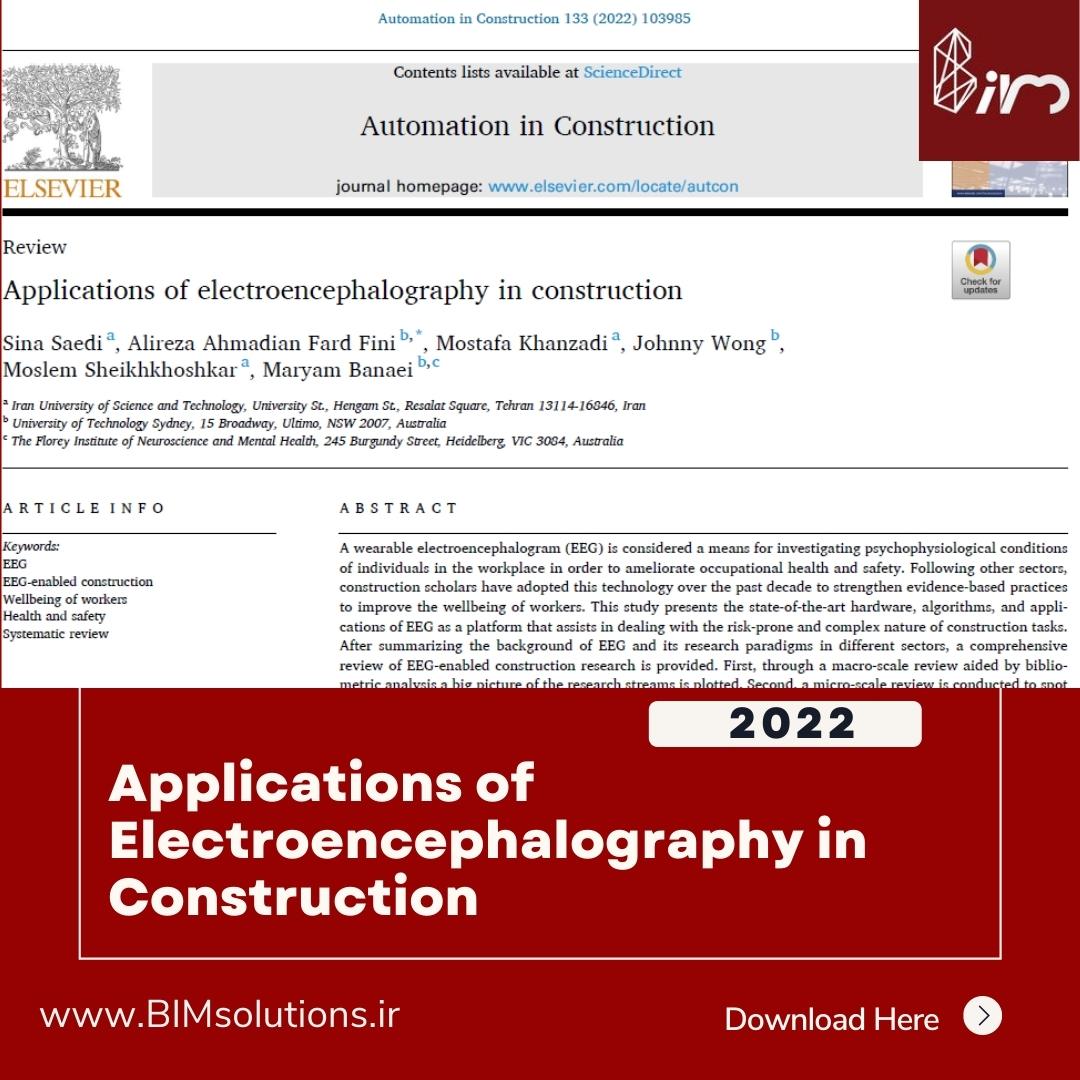کتابخانه مراجع و مقالات
Applications of electroencephalography in construction
- مدیرارشد
- کتابخانه مقالات انگلیسی
Sina Saedi a, Alireza Ahmadian Fard Fini b,*, Mostafa Khanzadi a, Johnny Wong b, Moslem Sheikhkhoshkar a, Maryam Banaei b,c
Abstract:
A wearable electroencephalogram (EEG) is considered a means for investigating psychophysiological conditions of individuals in the workplace in order to ameliorate occupational health and safety. Following other sectors, construction scholars have adopted this technology over the past decade to strengthen evidence-based practices to improve the wellbeing of workers. This study presents the state-of-the-art hardware, algorithms, and applications of EEG as a platform that assists in dealing with the risk-prone and complex nature of construction tasks. After summarizing the background of EEG and its research paradigms in different sectors, a comprehensive review of EEG-enabled construction research is provided. First, through a macro-scale review aided by bibliometric analysis a big picture of the research streams is plotted. Second, a micro-scale review is conducted to spot the gaps in the literature. The identified gaps are used to classify the future research directions into theoretical, application, and methodological developments.
Abstract:
A wearable electroencephalogram (EEG) is considered a means for investigating psychophysiological conditions of individuals in the workplace in order to ameliorate occupational health and safety. Following other sectors, construction scholars have adopted this technology over the past decade to strengthen evidence-based practices to improve the wellbeing of workers. This study presents the state-of-the-art hardware, algorithms, and applications of EEG as a platform that assists in dealing with the risk-prone and complex nature of construction tasks. After summarizing the background of EEG and its research paradigms in different sectors, a comprehensive review of EEG-enabled construction research is provided. First, through a macro-scale review aided by bibliometric analysis a big picture of the research streams is plotted. Second, a micro-scale review is conducted to spot the gaps in the literature. The identified gaps are used to classify the future research directions into theoretical, application, and methodological developments.



